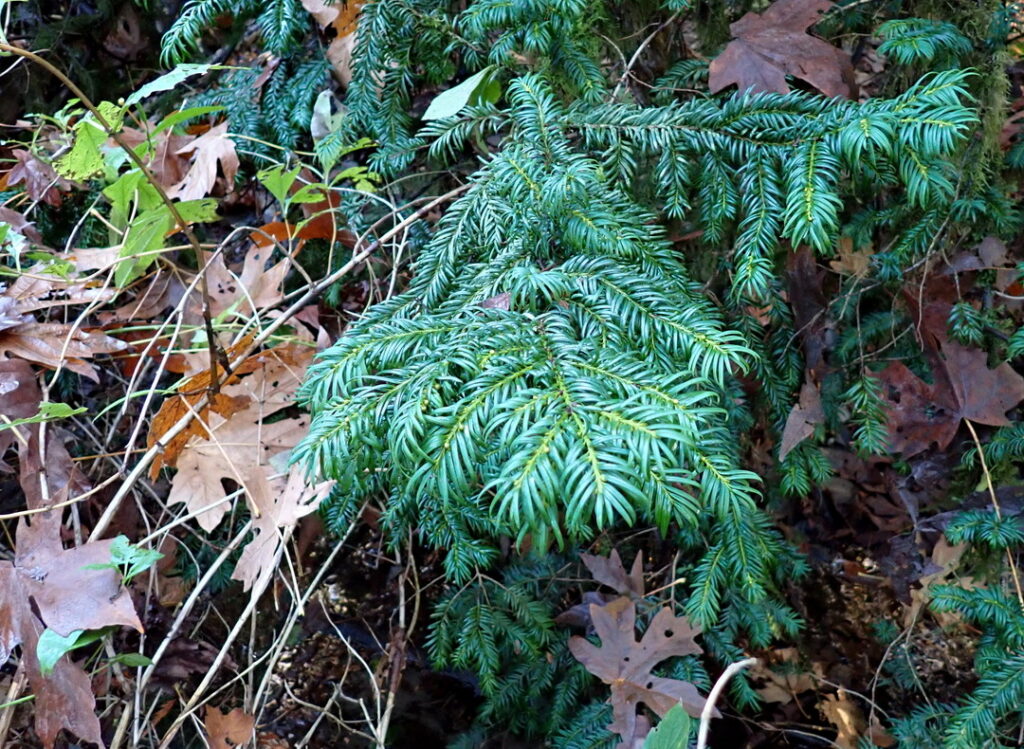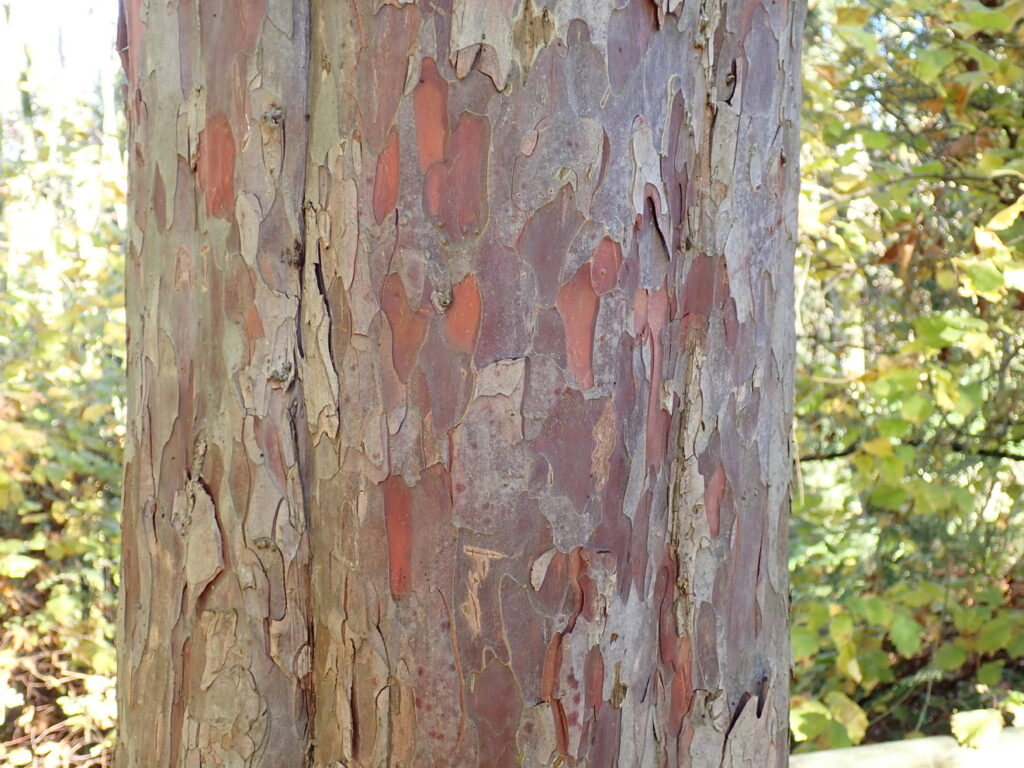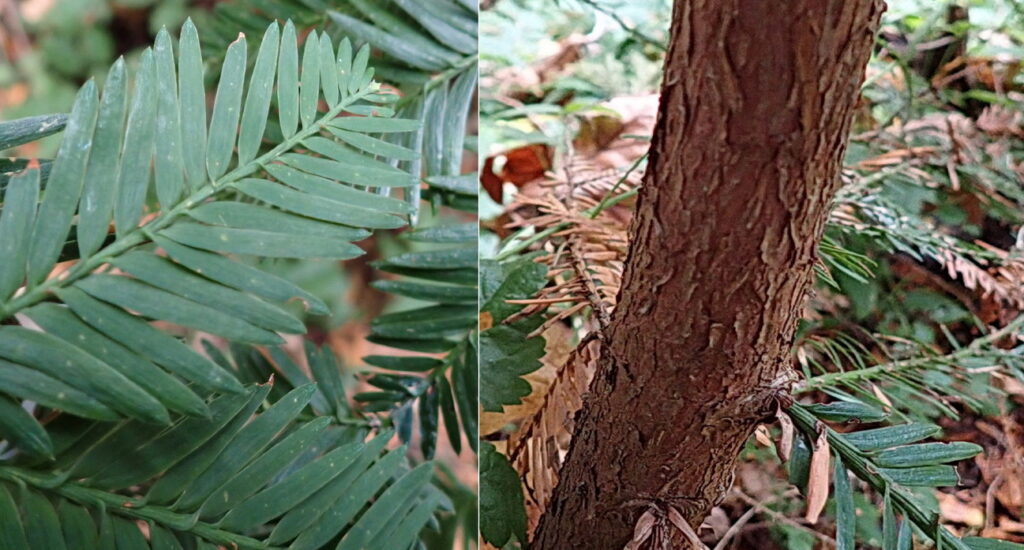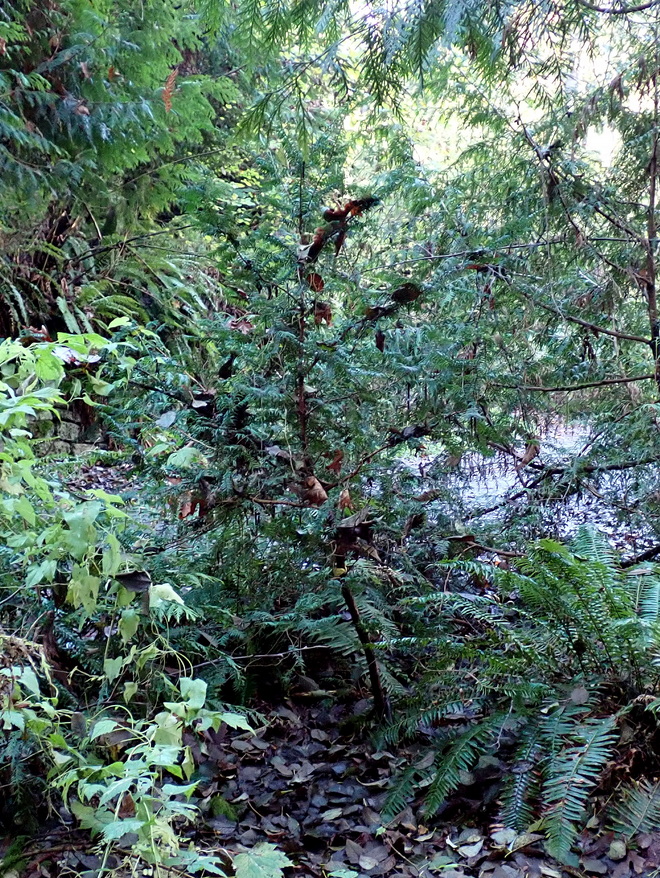The urban forests of the Puget Lowlands support both the native Pacific yew (Taxus brevifolia) and the non-native, naturalized European yew (Taxus baccata).

The Same or Different Species?
According to information about Pacific yew genetics in a 2018 U.S. Forest Service publication (here), “Pacific yew was originally classified as a variety of T. baccata (European yew), which it closely resembles.” Furthermore, “Where different species grow near each other, interspecific hybrids frequently occur, lending support to the view that there is but one species.”
Whether they are the same or different species, the density of foliage and the shape of individual needles can often — but not always — distinguish a Pacific yew from a European yew.
Density of Foliage
On a recent plant tour in Seattle’s Ravenna Park, Arthur Lee Jacobson showed us both species and highlighted differences he has observed. To quote from his book, Wild Plants of Greater Seattle, the needles of Pacific yew “tend to be at the ends of sparse, skinny, drooping twigs.” In contrast, the twigs and needles of European yew are “stronger, glossier, and more luxurious.”




But Not All Pacific Yews Have Sparse Foliage



Shade Tolerance

I wonder if lack of direct sunlight might contribute to the sparse foliage on some of the older Pacific yews?
- One source states that “where the overstory has been removed or thinned, diameter growth on undamaged Pacific yews may increase considerably.”
- In drier open habitats, Pacific yews can take on a shrublike appearance, forming a dense groundcover and spreading through layering.
Perhaps the Pacific yew prefers shade to become established, but eventually needs a certain amount of direct sunlight to maintain its foliage.

Bark


Shape of the Individual Needles
If density of foliage is not always a clear indication of the species, what other physical characteristics separate them? Jacobson has observed slight differences in the shape of the needles. With European yew, the needles usually taper gradually to a point whereas in Pacific yew the transition is more abrupt.

Slow Rate of Natural Regeneration
Both Pacific yews and European yews reproduce sexually when birds eat the bright red arils and disperse the undigested seeds. The fact that both species are uncommon in the Puget Lowlands suggests that their natural rate of regeneration is very, very slow.

Despite having been grown ornamentally in parks and yards for decades, the European yew does not appear to be invasive in our urban forests because of its slow rate of natural regeneration.
Where Does That Leave Us?
In short, density of foliage does not always provide a clear distinction between European and Pacific yews. Though the foliage on European yews is usually dense, not every Pacific yew has sparse foliage. The differences in the shapes of the needles are so subtle that I can’t always tell the difference. I would not remove a yew from the backyard forest unless I was certain it was the non-native European, and if in doubt, I would let it be since the European yew does not appear to be invasive.

